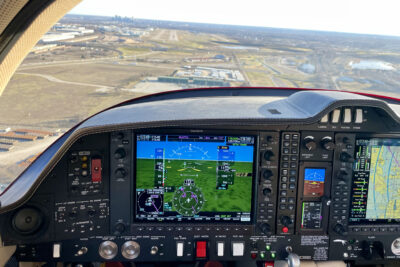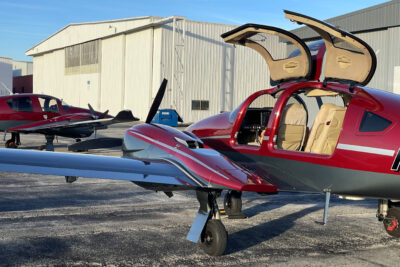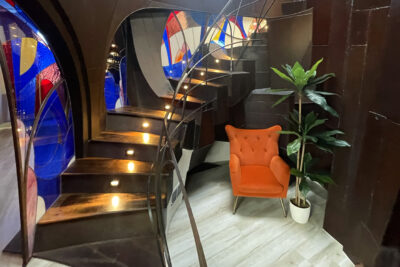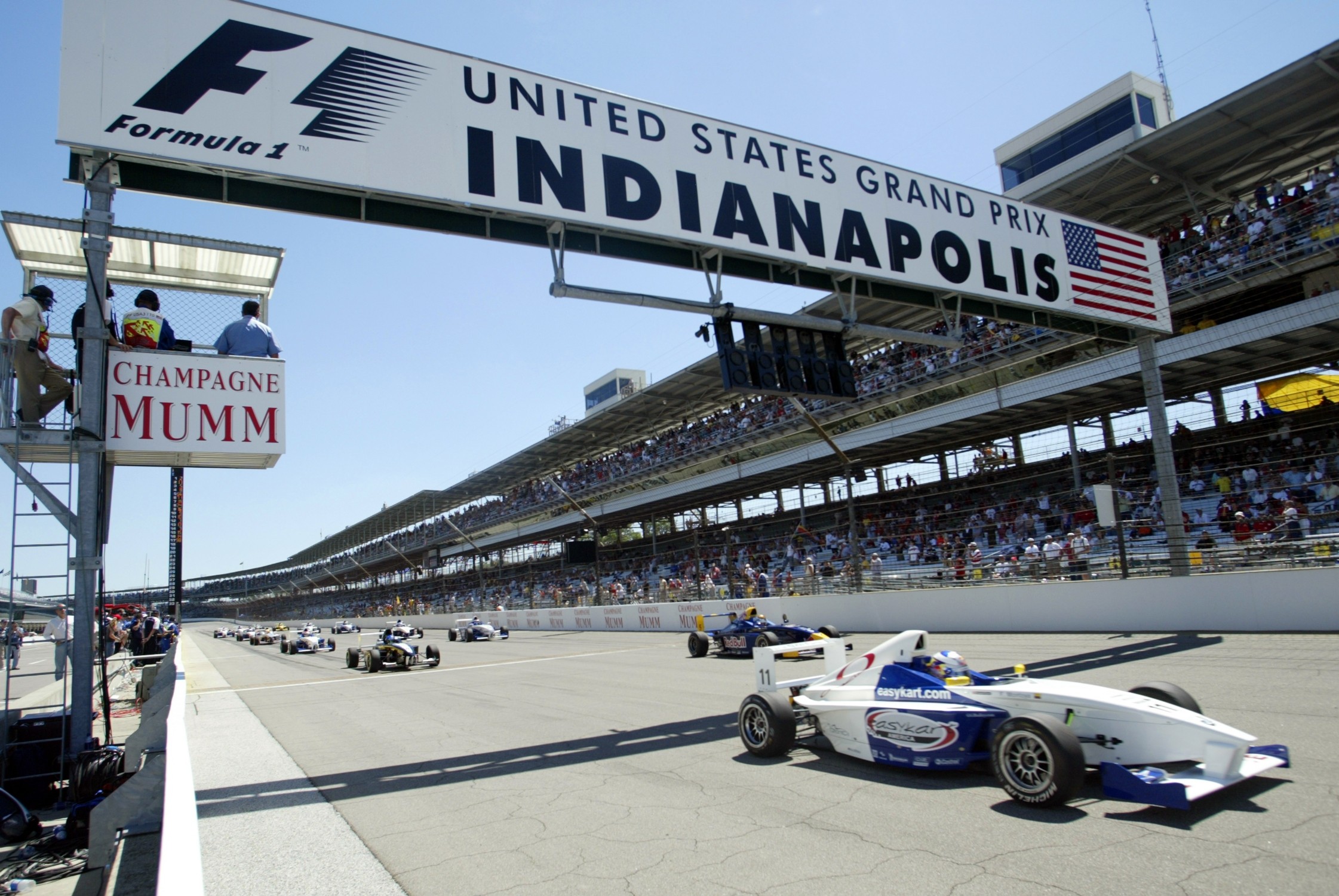It all started when my neighbor mentioned that his plane needed to go from Colorado to Fort Worth, Texas, for its annual inspection. I had been flying the Diamond DA62 with him since October, and he was going to hire a ferry pilot to move the plane. I happened to know of a 2011 BMW 550i in Dallas that I was going to possibly bring to Denver to sell on consignment—a rear-wheel-drive six-speed manual 550i would sell well in Colorado with spring on the horizon. Between the two (one built in Germany and one built in Austria), it seemed like a good opportunity for a flight and a road trip.
- Diesel power times two! (Jet A is close enough…)
- The Austro Engine E300 is an evolution of the Mercedes-Benz OM640 4-cylinder turbo-diesel engine.
The Diamond DA62 is one of the most modern general-aviation airplanes on the market. Rather than an evolution of a mid-20th century design, as so many small planes are, the DA62 is a clean-slate 21st-century technology design. The DA62’s carbon composite airframe is light, strong, and sleek, with embedded crash zones to protect the passengers. It is powered by twin 180-horsepower turbo-diesel four-cylinder engines spinning composite three-blade MT propellers. The engines and propellers are computer controlled, making starting as simple as pushing a button. A single power lever controls power and propeller pitch. The package is rounded out by supercar interior appointments and business-jet avionics. The downside is a $1.5-million price tag, which will easily buy a nice older single-engine turboprop. But the DA62 makes up for some of that with efficiency, because, while both burn Jet A, have known-icing certification, and radar, the DA62 burns less than half of that turboprop while still going over two-thirds as fast.
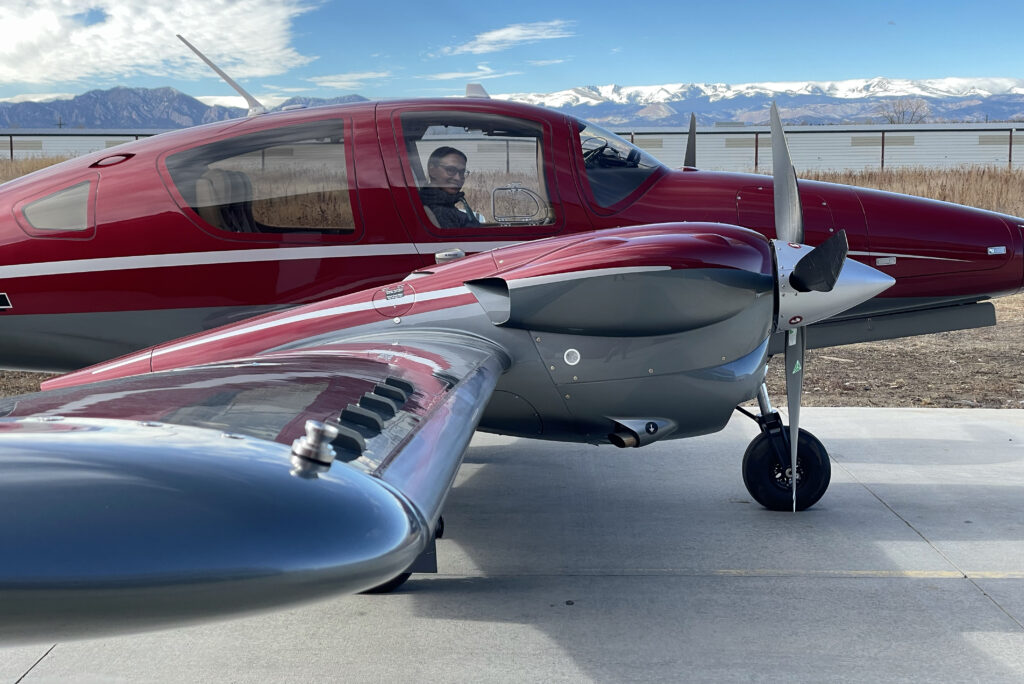
My better half loves the DA62.
- Cruising climbing under Denver’s Class B airspace (blue rings on the iPad) into the wide-open high plains.
- A slight tailwind helped an expeditious pace on the 500-plus-mile trip to Texas.
We loaded up in the DA62 and departed Erie, Colorado (KEIK) just after mid-day, cruise-climbing under Denver’s Class B airspace to 11,500 feet. The 569-nautical-mile flight to Fort Worth Meacham (KFTW) airport showed just under three hours en route. Leveling off at cruise, a fifteen-knot tailwind gave us a ground speed of around 200 knots while sipping eight gallons per engine per hour. Flying through the military operations area north of Sheppard Air Force Base, a T6 Texan II practiced intercepting us but peeled off at about one mile in trail. I watched it close the gap on the traffic screen and caught a glimpse over my left shoulder as they broke off. I told the controller any interceptions and join-ups were approved and encouraged, but none of the other Air Force pilots wanted to engage. Thanks to the tailwind, we landed 2 hours and 45 minutes after taking off.
- Rolling out on final with downtown Fort Worth in sight!
- Mission complete, we bid farewell to the DA62…
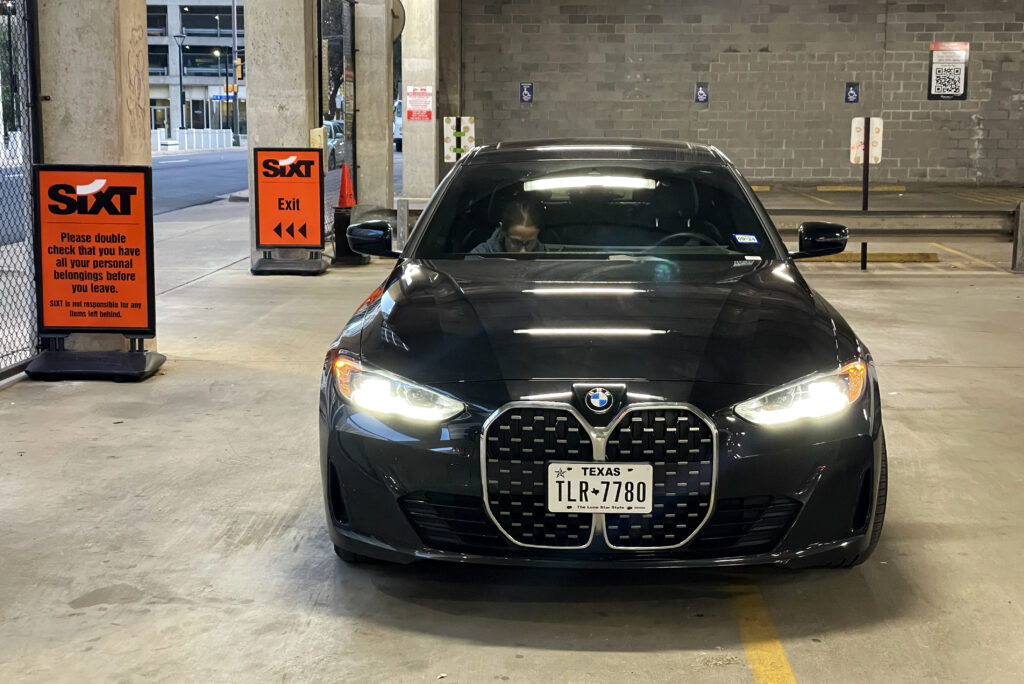
…and said hello to our 2024 BMW 430Xi Gran Coupe.
After landing, we caught a ride with the Diamond rep (in a diesel BMW) to Sixt Rental Cars in downtown Fort Worth. Unfortunately, I just wasn’t optimistic enough that I could sell the 550i for what the owner wanted, so we scratched that plan and rented a new BMW to get us home. Sixt specializes in premium rentals and is one of the few companies that will guarantee you a BMW. I had wanted a 3 Series, but instead was given a 2024 430i xDrive Gran Coupe. Standard Sport-trim level options on the Jet black over black SensaTec (animal-free) leather 4 Series were double-spoke multi-color alloy wheels, a large curved infotainment screen, a moonroof, Active Driving Assistant, and Active Blind Spot Detection. Additional options consisted of the Premium Package (heated seats, steering wheel, heads-up display, wireless charging, and lumbar support), the Parking Assistance Package, and ICON Adaptive LED headlights with Laserlight. According to the BMW website, the latter “pushes boundaries and provides the maximum output allowable for the United States.” Channeling my inner Dr. Evil, we loaded our luggage via the powered rear hatch and pointed those (air quotes) “lasers” westbound for our first stop of the trip.

The Gran Coupe was able to fit two rollaboards, a food bin and cooler in the rear hatch.
Settling into the new 4 Series, the BMW-phile in me was at home, but also somewhat dismayed by the dominance of the large, curved screen. The controls were familiar and ergonomic, with the majority of driving options naturally placed under my right hand on the center console. The lack of actual buttons on the dashboard was slightly distressing, with the climate controls and all other options buried in various menus on the infotainment screen. Although there was a permanent link for the climate settings at the bottom of the screen, the popular trend to move frequently used controls from tactile interfaces to touchscreens is not only annoying, but downright dangerous. In the smartphone age, where we are neuro-chemically rewarded for looking at a screen, having such a tempting distraction directly in front of a driver is terrifying. That said, I learned to navigate the layers of iDrive 7.0 quickly, and the app layout was similar to a smartphone. Apple CarPlay displayed nicely on the large screen, other than when iDrive 7.0 occasionally kicked me off, saying my mobile device was no longer Bluetooth compatible. Once the sun set, I also found the heads-up displayed to be too cluttered and eventually turned it off.
- The large center screen displayed Apple maps nicely, but over time I found the heads up display to be too cluttered.
While the G22-generation 430i Gran Coupe didn’t satisfy my sporting desires the way a semi-classic BMW M car does, when viewed from the lens of a modern car—and the other potential rental candidates—it was a good place to spend a road trip. In Sport Plus, the 255-horsepower 2.0-liter turbocharged four-cylinder B48 engine was happy to answer my requests for power. The suspension was taut, and the steering was communicative, albeit slightly darting. Out on the open road, free of the grasp of Fort Worth’s waning rush hour, cruise control was a must to keep out of the triple-digit range. Rather than chance an encounter with the inexpugnable law officers of Central Texas, I configured the drive mode to Eco Pro and watched the fuel economy slowly climb north of 30 mpg. The Gran Coupe soaked up the two-hour drive to our first stop nicely. As my wife drifted off to sleep, I pushed on into the wide-open expanse under a dark night’s sky.

Our first stop was a “storage container.”
- But it had a really nice pool…
- The Red Bird was a lovely place to wake up in and have a dip before a long day’s drive.

Our first stop was a storage container outside of Abilene. At first mention, my wife wasn’t too keen on staying in a storage container, but this wasn’t a normal storage container. It was an AirBnB called the Red Bird outfitted with a full kitchen, bathroom, beds, and a roof-top deck. But the highlight was a large pool, outdoor deck, kitchen and fireplace, hot tub, and a waterslide. We wasted no time warming our cold Colorado bones in the hot tub while sipping La Croix in front of the fire. In the morning, my wife insisted on taking a few laps down the waterslide. The pool water was frigid, but invigorating. Wide awake, we packed up and headed northwest.
- I’m still lukewarm to the 4 Series grilles, but they offer plenty of frontal area to de-bug Texas asphalt.
- The Bruno Steel House.
The 430i Gran Coupe soaked up the two-hour drive to Lubbock like an alleged BMW Gran tourer should. I left it in Eco Pro mode and watched the gas mileage climb to the mid-30 mpg range. Our next stop was the highlight of the trip, a stay in the late sculptor Robert Bruno’s Steel House. Starting in 1973, the Texas Tech architecture professor spent the next three-and-a-half decades slowly constructing the Steel House by welding panel after panel of Corten steel into cascading layers and curvatures overlooking the lake in Ransom Canyon. Bruno was meticulous to a fault, obsessively cutting and re-welding areas he wasn’t initially satisfied with. He even engineered a special crane to suspend him over the canyon and above the pillars of the house. In 2022, Bruno’s heirs sold the Steel House to a local realtor group who finished the interior and offered it as the Bruno Steel House AirBnB. At the time, this was controversial, but the plus side is that it allows others to experience Bruno’s vision. The experience is one to relish, as there are constantly new details and nuances to be found. As the sun set and we settled into bed, we opened the blinds in the upper bedroom for a 270-degree view of the wide-open Texas sky and infinite stars.
- Sunrise from the Bruno Steel House was spectacular over Ransom Canyon.
- Before we left town, I had one more stop to make.
In the morning, we awoke to the pastel colors of the sunrise. We had a long day’s drive ahead of us, but my wife granted me one more stop before we left town. Just south of Ransom Canyon, I noticed a familiar shape protruding above the hangars of a small airport. I checked my six, jammed on the brakes, and swerved into the gravel lot to see a Grumman F-14 Tomcat sitting in the flesh! Most of these jets were crushed when they were retired to stop spare parts from being smuggled to Iran, but this one was complete, down to the F-14A’s infamous Pratt and Whitney TF-30 engines. The latter is distinguishable by the narrow turkey-feather exhaust nozzles; the tail insignia identified it as a VF-101 Grim Reapers jet. I called the number on the sign, and we were treated to a private tour of the Slaton Texas branch of the Texas Air Museum. Other jets on static display were an F-4S Phantom (a version of the F4-J that was retrofitted with slats and low-smoke jet engines), an A-7 Corsair II, an F-105 Thunderchief, and a MiG-23 Flogger.
- A mighty VF-101 Grim Reapers F-14A, complete with the P&W TF-30 engines!
- An F-4S Phantom and MiG-23 Flogger accompanied the F-14.
I could have stayed all day, but we had a long drive ahead of us. Our route would take us through the “top hat” of Texas, the panhandle of Oklahoma, and the expansive plains of Eastern Colorado. The desolate two-lane roads were refreshingly devoid of traffic; the solitude was wonderful. I stuck to my Eco Pro mode strategy, in part because my trip fuel economy had climbed north of 40 mpg, but also to avoid any encounters with the law. After filling up, I was holding 45 mpg on the second tank alone.
- Crossing into Colorado at sunset, averaging 44 mpg in Eco Pro.
- Last stop in Lamar, Colorado.
With a solid eight hours in the saddle, the 430i Gran Coupe handled the mission with poise. Other than the climate controls being buried in the touchscreen, my biggest complaint was staying comfortable in the seat after the four-hour mark (which could be true of many cars). Despite the passage of time, I still find the buck-teeth grilles on the non-M cars distasteful. But, compared to the modern rental alternatives from other marques, there were few better cars for the mission. Plus, to truly appreciate the rad-era BMWs I love so much, it’s good to dip a toe in the water of the present!—Alex McCulloch

Totals: just under 1,000 miles, averaging 40 mpg. Not bad for a BMW with me behind the wheel!









